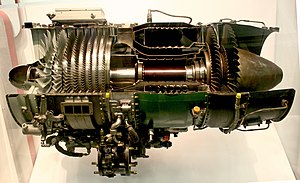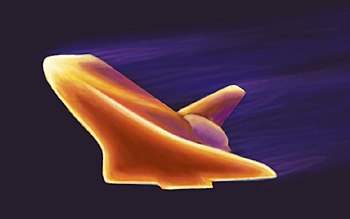The selected video shows important use of ceramics and advance tools for medical devices, solar ceramics, nuclear storage containment, armored vehicles, space and military vests, security deployment, tissue engineering, bone replacement, UAV unmanned aerial vehicles, space flight and composite engine parts & materials. These are just few its uses and currently expanding rapidly in various industries including military:
Ceramics has been around since mankind uses stone and it will be around for our future generations to use.
US army soldiers wearing bulletproof ballistic vests with an armored MS Bradley. The vest and armored vehicle are some examples of military uses of ceramic materials.
Transparent night vision goggles.

Kitchen Top
Our New Modern industry
- U.S. Army soldiers wearing bulletproof ballistic vests with an armored M3 Bradley and night vision goggles.
Now a multi-billion dollar a year industry, ceramic engineering and research continues to expand rapidly as engineers and researchers develop new kinds of uses.
- Zirconium dioxide ceramics are used in the manufacture of knives. The blade of the ceramic knife will stay sharp for much longer than that of a steel knife, although it is more brittle and can be snapped by dropping it on a hard surface.
- Ceramics such as alumina, boron carbide and silicon carbide have been used in bulletproof vests to repel large-caliber rifle fire. Such plates are known commonly as small-arms protective inserts (SAPI). Similar material is used to protect cockpits of some military airplanes, because of the low weight of the material.
- Silicon nitride parts are used in ceramic ball bearings. Their higher hardness means that they are much less susceptible to wear and can offer more than triple lifetimes. They also deform less under load meaning they have less contact with the bearing retainer walls and can roll faster.
- In very high speed applications, heat from friction during rolling can cause problems for metal bearings; problems which are reduced by the use of ceramics.
Ceramics are also more chemically resistant and can be used in wet environments where steel bearings would rust. The major drawback to using ceramics is a significantly higher cost. In many cases their electrically insulating properties may also be valuable in bearings.
- In the early 1980s, Toyota researched production of an adiabatic ceramic engine which can run at a temperature of over 6000 °F (3300 °C). Ceramic engines do not require a cooling system and hence allow a major weight reduction and therefore greater fuel efficiency.
- Fuel efficiency of the engine is also higher at high temperature, as shown by Carnot's theorem. In a conventional metallic engine, much of the energy released from the fuel must be dissipated as waste heat in order to prevent a meltdown of the metallic parts.
- Despite all of these desirable properties, such engines are not in production because the manufacturing of ceramic parts in the requisite precision and durability is difficult. Imperfection in the ceramic leads to cracks, which can lead to potentially dangerous equipment failure. Such engines are possible in laboratory settings, but mass-production is not feasible with current technology.
- Work is being done in developing ceramic parts for gas turbine engines. Currently, even blades made of advanced metal alloys used in the engines' hot section require cooling and careful limiting of operating temperatures.
- Turbine engines made with ceramics could operate more efficiently, giving aircraft greater range and payload for a set amount of fuel.
Collagen fibers of woven bone
SEM 10,000x magnification of crystalline bone mineral.
Recently, there have been advances in ceramics which include bio-ceramics, such as dental implants and synthetic bones. Hydroxyapatite, the natural mineral component of bone, has been made synthetically from a number of biological and chemical sources and can be formed into ceramic materials.
- Water quality improves when placed under a Bio ceramic container as show by this video.
- Orthopedic implants made from these materials bond readily to bone and other tissues in the body without rejection or inflammatory reactions. Because of this, they are of great interest for gene delivery and tissue engineering scaffolds. Most hydroxy apatite ceramics are very porous and lack mechanical strength and are used to coat metal orthopedic devices to aid in forming a bond to bone or as bone fillers.
This bone surgery video shows bio ceramics will be useful in the tissue and bone transplant; remote robotic construction capability where toxic say nuclear materials exist and requires delicate engineering processes; unmanned vehicles for military, security and construction remote sensing purposes are shown.
Unmanned research vehicles with remote sensing capabilities shown in this video reflects the future use of ceramics and composite materials in this industry.
- They are also used as fillers for orthopedic plastic screws to aid in reducing the inflammation and increase absorption of these plastic materials.
- Work is being done to make strong, fully dense nano crystalline hydroxyapatite ceramic materials for orthopedic weight bearing devices, replacing foreign metal and plastic orthopedic materials with a synthetic, but naturally occurring, bone mineral. Ultimately these ceramic materials may be used as bone replacements or with the incorporation of protein collagens, synthetic bones.
- Video shows how ceramics tools and tissue engineering devices are used.
- High-tech ceramic is used in watchmaking for producing watch cases. The material is valued by watchmakers for its light weight, scratch-resistance, durability and smooth touch. IWC is one of the brands that initiated the use of ceramic in watchmaking.
The case of the IWC 2007 Top Gun edition of the Pilot's Watch Double chronograph is crafted in high-tech black ceramic.
This video shows some innovations and uses of current advance technologies on UAV's, space flight materials, medical devices, surgery etc.
The following video shows how ceramics and bone surgery replacement combine with Tissue engineering could someday developed artificial organs like heart, kidney or cartilages.
- Tissue Engineering devices, bone replacements:
The world has evolved a long way from stone age to ceramics age. The
Processing steps: The traditional ceramic process generally follows this sequence: Milling, Batching,Mixing, Forming, Drying, Firing and Assembly.
Glass ceramics:
Glass-ceramic materials share many properties with both glasses and ceramics. Glass-ceramics have an amorphous phase and one or more crystalline phases and are produced by a so called "controlled crystallization", which is typically avoided in glass manufacturing.
Glass-ceramics often contain a crystalline phase which constitutes anywhere from 30% to 90% [m/m] of its composition by volume, yielding an array of materials with interesting thermomechanical properties. Maybe at some point construction materials and building walls could be developed to absorbed heat and delay burning. Improves safety during earhquake or fire accidents.
Ceramic splitters, advance glass materials use on variety of laboratory and home surfaces arte shown in this video.









No comments:
Post a Comment